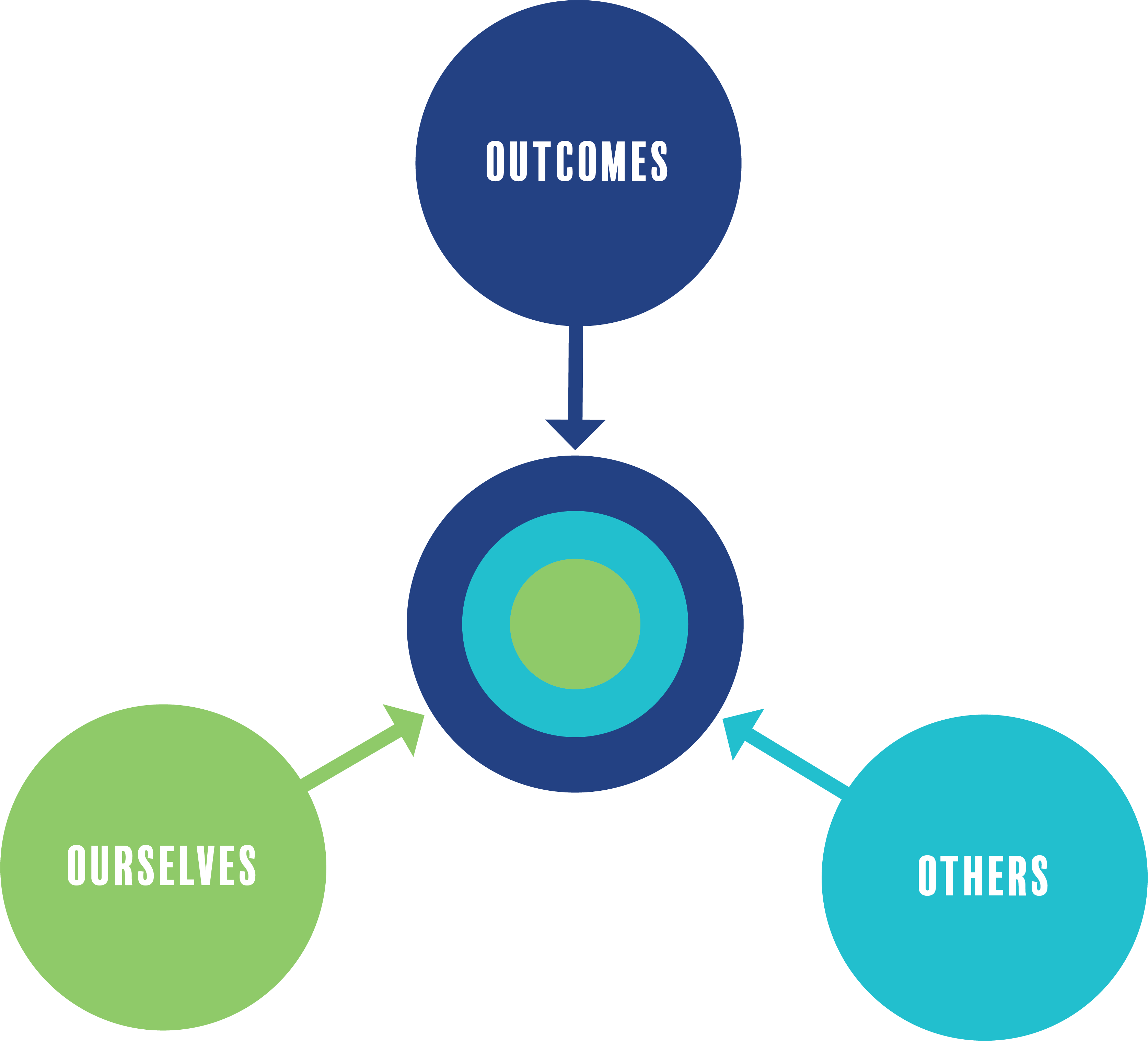One of the most useful models in the first edition of The Long-Distance Leader was the 3O Model. This simply says that for work to be done remotely, we leaders need to remember Outcomes, Others, and Ourselves. As we get ready to launch the updated version, it’s important to ask ourselves, what’s changed and what hasn’t?

What likely hasn’t changed is the Outcomes we want to achieve. Your business probably serves your customers in much the same way you were before 2018 (assuming you were around.) The outcomes—the work you, your organization, and your team do— is likely the same as ever. Customers need to be served, reports written, parts ordered. What we do is much the same as ever. How we do it has changed.
Some of these changes are obvious; others are more subtle. People have had time to reexamine whether work needs to involve long commutes, living close to the office, and time away from the family.
How leading Others has changed
Leading others, either in a fully remote or a hybrid manner, requires us to adjust to the model we would follow for in-person work. How much we trust each other, how we coach our people and how we attract and keep top talent are part of the job. Here are some of the factors that have changed over the past few years:
- Employee engagement. Before the pandemic, one of the objections to remote work was employees wouldn’t be as engaged as they are when they are co-located with their peers. In fact, in many cases engagement actually went up when people started working from home. Some of this was due to the sense of mission and helping each other through a crisis. Now we find that people who work remotely or in a hybrid environment and like it, are your most engaged employees. Of course, those who are disengaged are more distant and uninvolved than ever.
- Retention and Turnover. It wasn’t surprising that the return to the office has been chaotic. It meant changes in lifestyle, childcare, and even commuting costs. If people want to work mostly or completely remote, there are few barriers to changing jobs, and flexibility in work hours and locations is the most requested perk of new employees.
- Relationships that defy distance. The team must intentionally create connections, which we’ve known forever. Having some people in the office and others remote can create unintentional schisms. Proximity bias, perceptions of favoritism, and unintentionally excluding people from decisions and important conversations can happen more easily than we think.
How we tend to Ourselves has changed
As hybrid work takes off, leaders often find themselves stretched thin. Flexible time is great for employees, but it may mean your day begins earlier and ends later than everyone else’s. Too many leaders sacrifice their own time and energy for the sake of the team.
Some of the ways you can take care of your mental/physical health are:
- Protect your time. Treat yourself like you do your employees. Set boundaries around when you respond to messages, guard your family time, and take vacation and personal time.
- Model realistic expectations and behavior. Use and stand by your out-of-office notifications and status updates. If you write emails at odd times, set your system to send them out at a specific time in the morning so your team doesn’t get messages in the middle of the night and panic.
- Make time for your team. Remote employees can’t poke their heads into your office to see if you’re available. Try setting up set office hours where, for a few hours a week, you are available to those who aren’t where you are.
- Schedule rest and exercise, and eat like a grownup. As the old saying goes, you aren’t any good to anyone else if you’re not good to yourself. Nobody will begrudge your taking care of yourself, and it may even inspire others to do the same.
- Continue to learn and grow. Learning new skills and taking part in training can make you better, faster, and more efficient. It is also fun and challenging to give your brain some exercise. Don’t think of it as a cost, think of it as an investment in you and your team.
How we focus on Outcomes, Others, and Ourselves may have changed over the last few years, but the importance of doing it remains the same. Check out more in our updated edition of The Long-Distance Leader, Revised Rules for Remarkable Remote and Hybrid Leadership.

0 comments